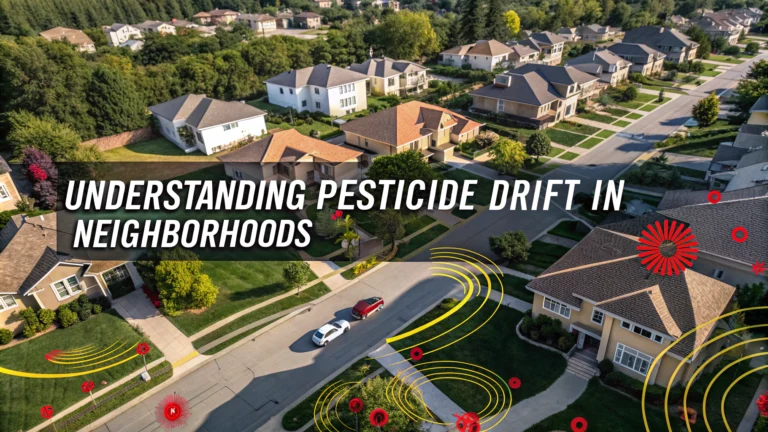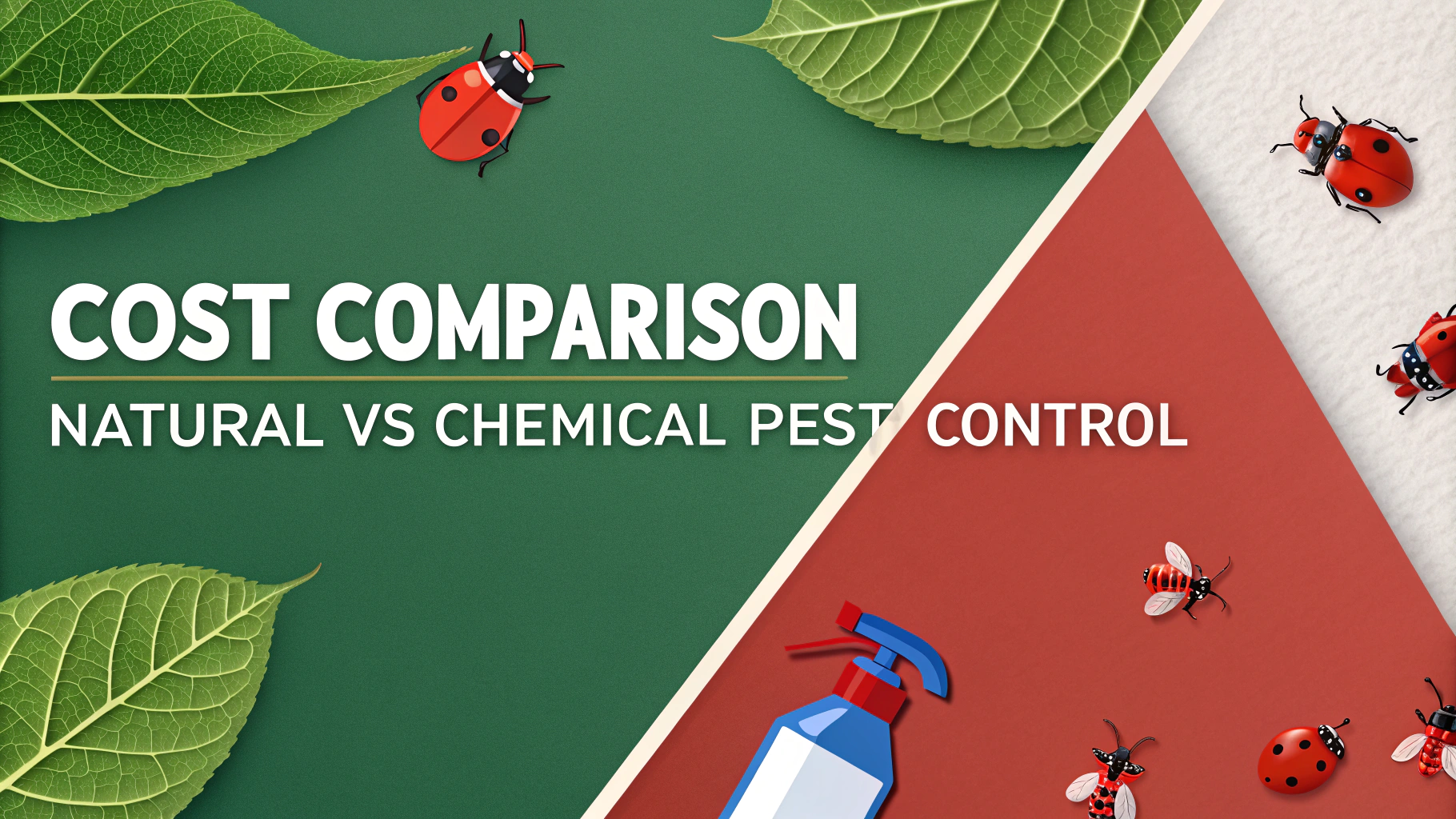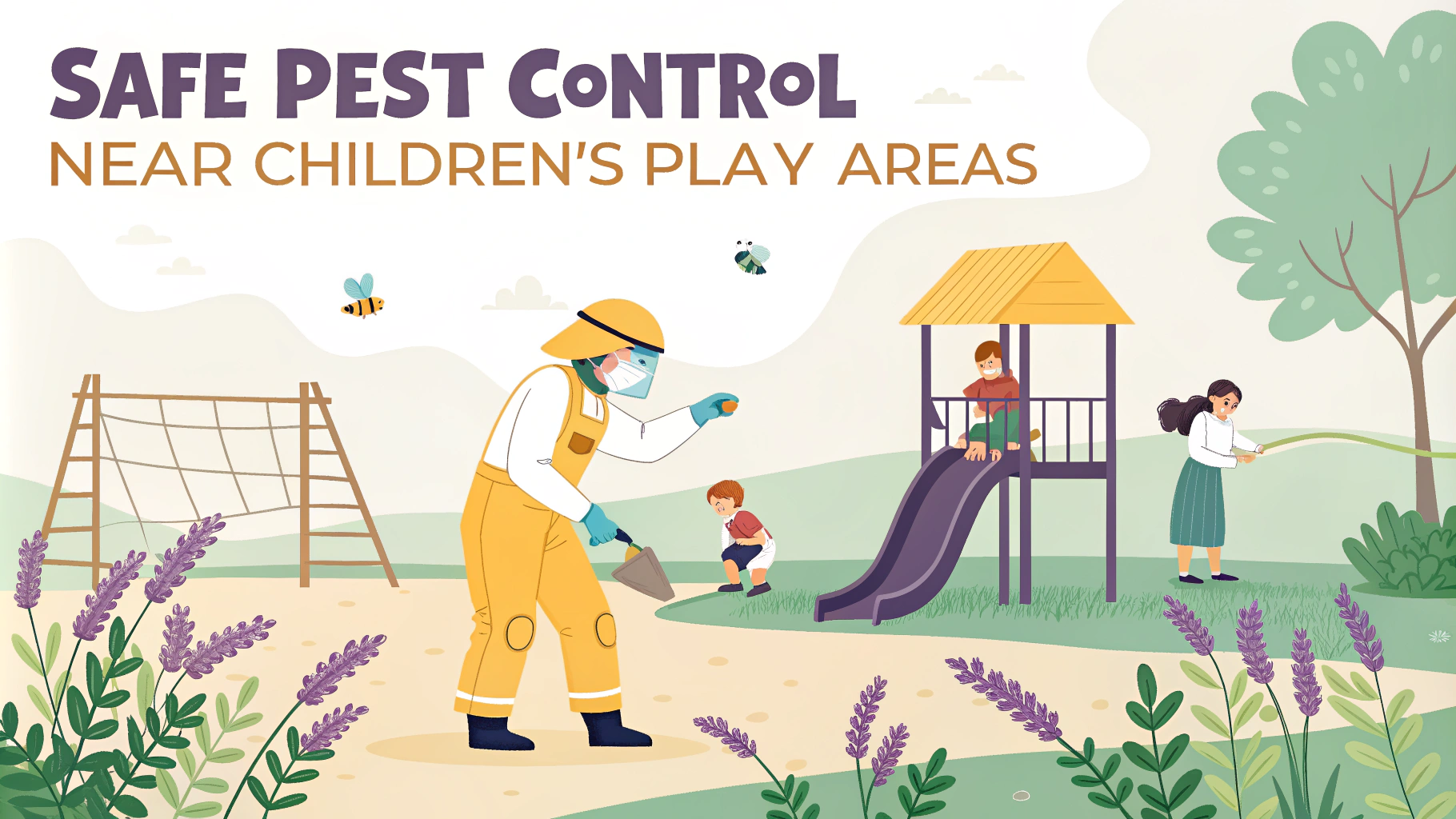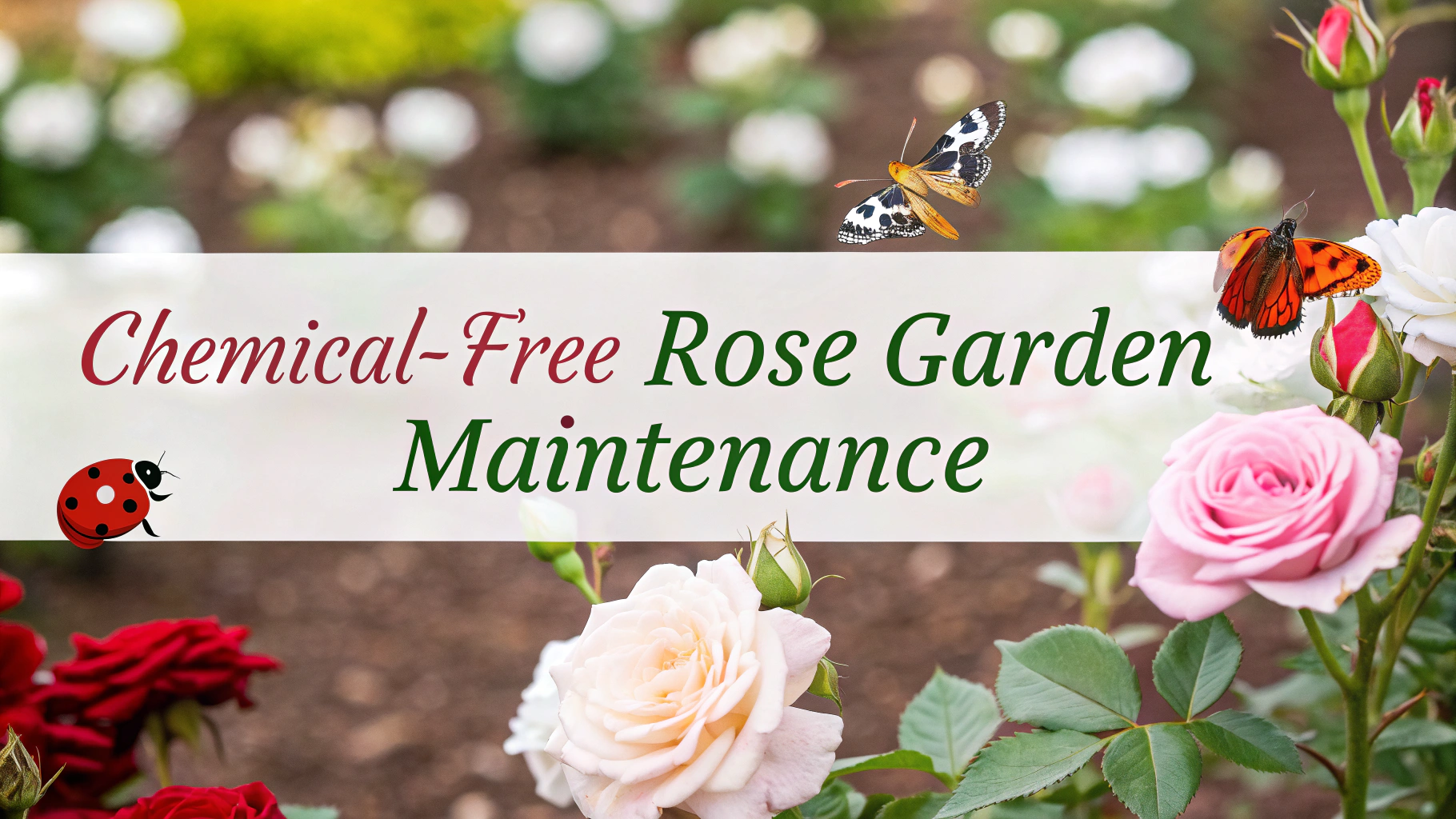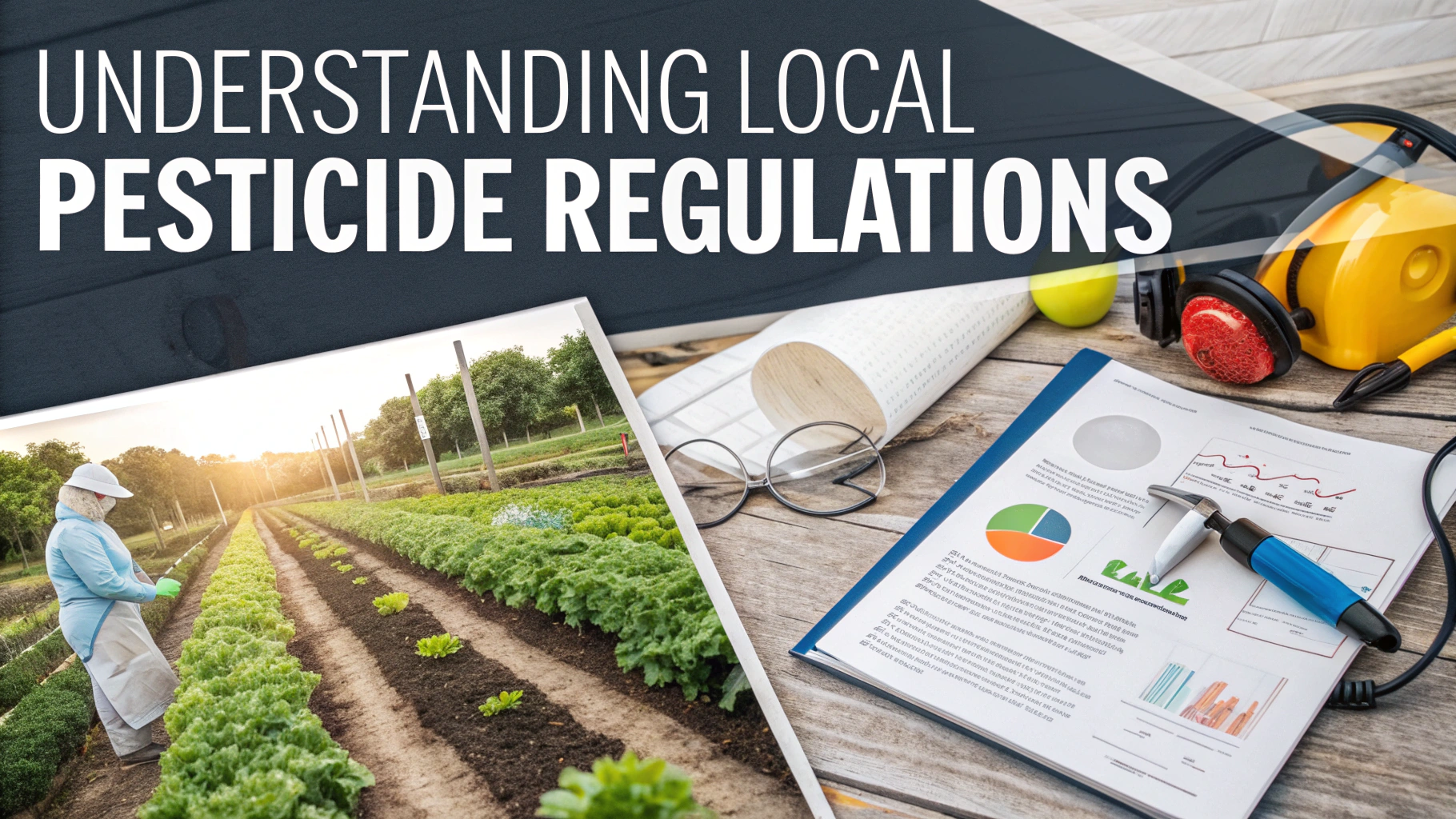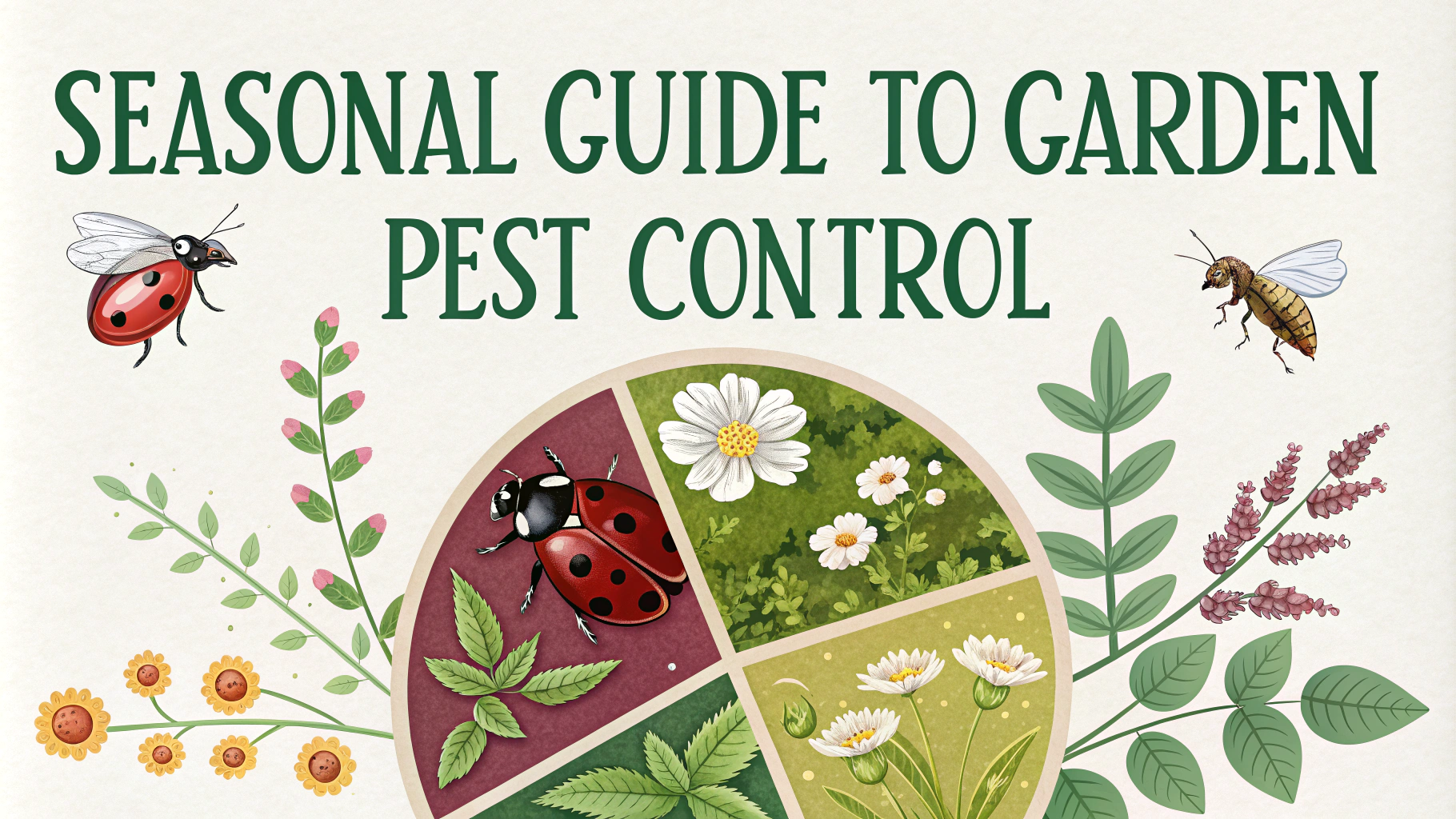Pesticide drift happens when agricultural or lawn chemicals move through the air into unintended areas, potentially affecting neighborhood health and property.
The EPA defines pesticide drift as the airborne movement of pesticides from the target application site to any non-target site.
Common Sources of Pesticide Drift
- Agricultural spraying from nearby farms
- Lawn care services treating neighboring properties
- Home gardening chemical applications
- Municipal pest control operations
Health Risks
Exposure to drifting pesticides can cause immediate symptoms like headaches, nausea, and respiratory issues.
Long-term exposure might lead to more serious health conditions, including certain cancers and neurological problems.
Protecting Your Property
- Install physical barriers like hedges or fences
- Close windows during nearby spraying
- Cover outdoor furniture and play equipment
- Bring pets indoors during applications
Legal Rights and Actions
Document any drift incidents with photos, videos, and detailed notes including dates, times, and weather conditions.
Report suspected pesticide drift to your state’s pesticide regulatory agency.
| Who to Contact | When to Contact |
|---|---|
| State Environmental Protection Agency | Immediate drift concerns |
| Local Health Department | Health-related symptoms |
| EPA National Pesticide Information Center: 1-800-858-7378 | General information and guidance |
Prevention Tips for Property Owners
- Communicate with neighboring property owners about pesticide applications
- Request notification before nearby spraying occurs
- Consider creating buffer zones with native plants
- Monitor local wind conditions and weather forecasts
Alternative Solutions
Consider natural pest control methods for your own property, such as companion planting or biological controls.
Work with neighbors to establish community guidelines for pesticide use and drift prevention.
If you experience symptoms after pesticide exposure, seek medical attention immediately and contact poison control at 1-800-222-1222.
Resources for Further Information
- EPA Pesticide Program
- National Pesticide Information Center
- Local Extension Office (Search your state’s cooperative extension service)
Documentation Best Practices
- Keep a detailed logbook of all pesticide drift incidents
- Take dated photographs of any visible damage
- Save weather reports from incident dates
- Maintain records of any related medical visits
- Keep receipts for property damage repairs
Environmental Impact
Pesticide drift can affect local ecosystems, including beneficial insects, birds, and water sources. Even low-level drift may impact sensitive plant species and organic farming operations.
Common Environmental Effects
- Damage to non-target vegetation
- Contamination of water bodies
- Harm to pollinator populations
- Soil quality degradation
Community Action Steps
Engaging with your community can help create broader awareness and solutions for pesticide drift concerns.
- Form neighborhood watch groups for drift monitoring
- Organize educational workshops
- Develop local notification systems
- Support drift-reduction policies
Conclusion
Pesticide drift poses significant risks to both human health and environmental well-being. Through proper documentation, preventive measures, and community engagement, residents can better protect themselves and their properties from unwanted pesticide exposure.
While complete elimination of drift risk may be challenging, implementing recommended safeguards and maintaining open communication with neighbors can significantly reduce potential impacts.
Remember to stay informed about local pesticide regulations and maintain updated contact information for relevant authorities in case of drift incidents.
FAQs
- What exactly is pesticide drift and how does it occur?
Pesticide drift occurs when airborne pesticide particles or vapors move away from their intended target area during or after application. This can happen through wind movement, temperature inversions, or improper application methods. - How far can pesticide drift travel in residential areas?
Pesticide drift can travel several hundred feet to several miles depending on weather conditions, droplet size, and application method. Fine droplets can travel further, while larger droplets tend to settle more quickly. - What are the health risks associated with pesticide drift exposure?
Common health effects include eye and throat irritation, breathing problems, headaches, nausea, and skin rashes. Long-term exposure may lead to more serious health issues including respiratory problems, neurological effects, and increased cancer risks. - How can I tell if pesticide drift has affected my property?
Signs include chemical odors, visible residue on surfaces, unexplained plant damage or wilting, and physical symptoms in people or pets shortly after nearby pesticide applications. - What should I do if I suspect pesticide drift exposure?
Document the incident with photos, keep records of dates and times, seek medical attention if symptoms occur, and report the incident to your state’s pesticide regulatory agency. - Are there laws protecting residents from pesticide drift?
Yes, federal and state laws regulate pesticide applications. The Federal Insecticide, Fungicide, and Rodenticide Act (FIFRA) makes it illegal to apply pesticides in a manner inconsistent with their labeling. - How can I protect my family from pesticide drift?
Close windows and doors during nearby applications, bring children’s toys and pets inside, cover swimming pools, garden furniture, and bring in laundry from clotheslines when spraying is occurring nearby. - What time of day is pesticide drift most likely to occur?
Drift is most likely during temperature inversions, which typically occur in early morning or evening hours when air is still and temperature is cooler near the ground. - Can organic gardens be protected from pesticide drift?
While complete protection is difficult, buffer zones, physical barriers like hedges or fences, and good communication with neighboring property owners can help reduce drift exposure to organic gardens. - What are my legal rights if my property is affected by pesticide drift?
Property owners affected by drift may have legal recourse including filing complaints with regulatory agencies, seeking compensation for damages, and pursuing civil litigation against responsible parties.
